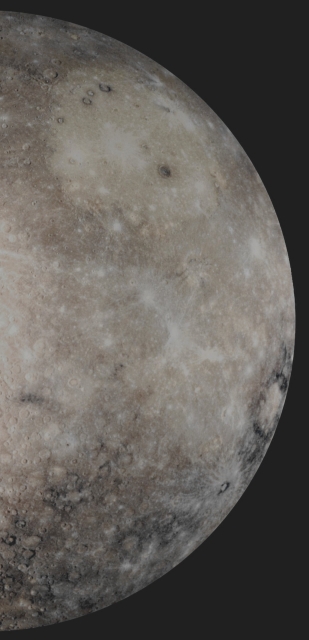
July 26, 2012
Credits: NASA/Johns Hopkins University Applied Physics Laboratory/Carnegie Institution of Washington and Dr Paolo C. Fienga/LXTT/IPF for the additional process. and color.
|
This spectacular image-mosaic (released, for today's APOD in Absolute Natural Colors) shows the Eastern Limb of Mercury as seen by the NASA - MESSENGER as the Spacecraft departed the Innermost Planet following the Mission's first Mercury Fly-By, occurred in the month of January of the AD 2008. The different Rock Types result in very subtle color variations across all of the 11 Wide Angle Camera (WAC) narrow-band color filters. The Caloris Basin, visible on the upper right side of the frame as a large pale gray-brown and yellowish colored circular area, due to its infill of Volcanic Plains, dominates the Northern Regions. Out of curiosity, an image similar to this one was published in the Science Magazine in July 2008, but it only covered the Northern half of the Region shown here. Date Acquired: January 14, 2008 This frame has been colorized in Absolute Natural Colors (such as the colors that a human eye would actually perceive if someone were onboard the NASA - MESSENGER Spacecraft and then looked outside, towards the Planet Mercury), by using an original technique created - and, in time, dramatically improved - by the Lunar Explorer Italia Team.
|
News visualized: 701 times

